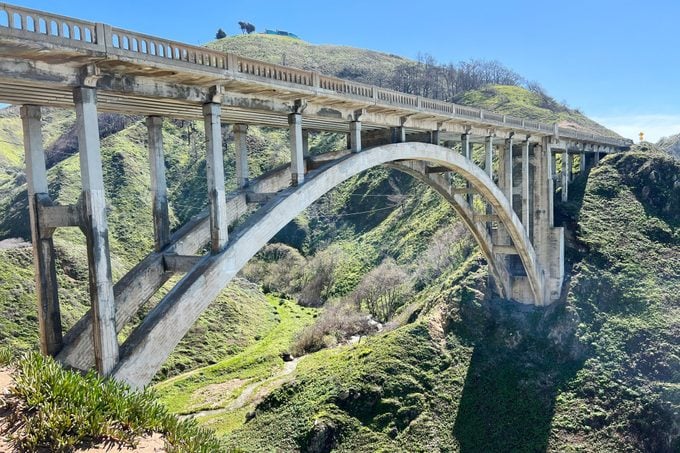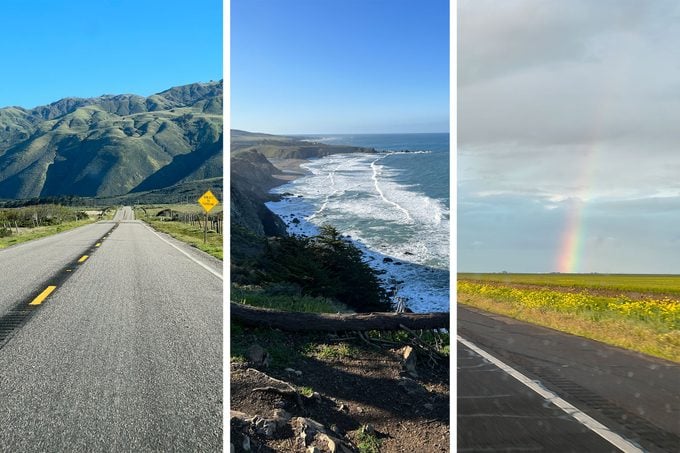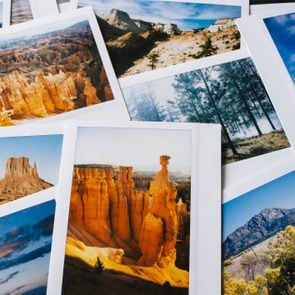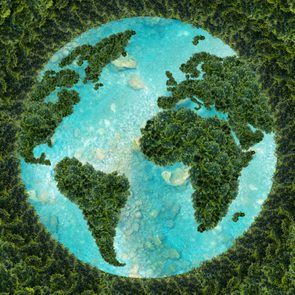I Took an All-Electric Road Trip in California—Here’s What Surprised Me the Most
Updated: Mar. 19, 2024

Not sure what to expect on an EV road trip? For starters, these eco-friendly cars are faster and more powerful than you might expect.
Our editors and experts handpick every product we feature. We may earn a commission from your purchases.Learn more.
Travel makes you smart. That’s what my co-host, Michael Dietz, and I tell our listeners on the podcast we host in Germany, called Reisen Reisen (or Travel Travel in English). But it works the other way too: Smart choices about how we travel can make the experience better.
We’ve highlighted the importance of sustainable travel ever since we started the podcast in 2018. The ability to travel and experience other cultures is a great gift, but we have to do it with the least amount of pollution possible. The world is starting to understand this. Right now, there’s legislation in seven U.S. states, and in the European Union, to ban the use of new gas cars after 2035.
Of course, nowhere are cars more ingrained in the culture than in America. The California road trip down Highway 1 is iconic. Almost everyone on this planet knows about that route, and it’s a dream trip for people who like to drive cars. So when I was offered the opportunity to do that trip in an electric vehicle (EV)—sort of reimagining that classic road trip without contributing to climate change—I decided to give it a try. I didn’t know much about electric vehicles before this, but I learned a lot quickly and encountered a few surprises on the road. If you’re considering taking an EV road trip or you’re just interested in living more sustainably, you’ll definitely want to read this.
Get Reader’s Digest’s Read Up newsletter for more travel, tech, humor, cleaning and fun facts all week long.
Embarking on an epic Highway 1 drive
I picked up my electric car, a Tesla, at San Francisco International Airport. I was worried that it would have a steep learning curve, but it was really like any other car. I’m not the fastest guy with these things, but it took me less than 30 minutes to adjust to all the electronics. The ride itself was smooth, and it felt the same as driving a traditional car. It had so much power—and that surprised me. It can go very fast, very quickly, even on the steep hills the region is known for.
Over the course of the next three and a half days, I drove about 300 miles, heading south for my first glimpses of the California coast, before heading inland to try to explore a couple national parks, and then driving northward up to Monterey. The scenery was much more spectacular than I recalled from when I was here 15 years ago. I could have stopped every minute to take 50 million photos. It was amazing, driving between this beautiful country and the beautiful ocean in this dream car that doesn’t pollute. I think that realization made the trip even better.
Fueled for adventure

My biggest concern at the beginning of this EV road trip was running out of battery life in the middle of nowhere. I had never driven an eco-friendly car before, and I had no idea how advanced the infrastructure for EVs would be on my route. Before I left, I just checked Google Maps for charging stations and a couple of forums to make sure an all-EV road trip was possible, at least in theory. Here’s what I learned once I got on the road.
The EV’s charge estimates are reliable
The car tells you how many more miles your battery will last, so you’ll know right away if you won’t have enough battery to go to the next destination you have planned. I found the estimates to be reliable. I never got in a situation where it got really, really close. And I’m not a guy who plans everything ahead.
The charging stations were pretty common along my route. I often saw them in the parking lots of shopping centers. Even some hotels had them. This is just my experience in California; I don’t know if it would be the same in the rest of the United States, or if it would be possible in Germany. But in my situation, it was pretty easy.
When I picked up the car, it said I could go more than 250 miles on one charge. I never tested that. I’d also heard that some electric cars use a lot of battery if you turn on the heat, but I never turned on the heat because it was the perfect temperature during my trip. The farthest I went on one charge was about 185 miles, but I tried to charge every day, just to be safe. I relied on the car’s navigation system to help me find charging stations, but you can also use Google Maps or certain gas and EV apps.
It takes a long time to charge an EV
Charging your electric vehicle is not like the 10-minute stop at a gas station—it can take up to an hour for a full charge. But you don’t have to do a full charge every time. Within 30 minutes, you really get a lot of power.
You can also plan around that so you don’t “lose time” charging. You can do it while you’re shopping or while you’re in a hotel or restaurant. I would charge my car in the evening so I was ready for the next day’s drive. (I stayed at the Asilomar Hotel in Pacific Grove, which had an EV charging station on site.) One thing to know is that there are different levels of chargers, and some charge faster than others. Google Maps will show you which ones have the faster chargers.
Charging a car is cheaper than filling your tank
Once I was done charging, I was surprised how cheap it was when compared with gas. I don’t recall the exact prices, but when I got my credit card bill at the end of the trip, I thought there must be charges missing. So you can definitely save money on gas with an electric car, I think.
(Editor’s note: The cost of charging a car can vary, depending on what type of charger you use, with the fastest ones costing more. Costs can also vary by region; the cost of electricity plays a role in this.)
You might need special adapters for charging
Electric vehicles may require a connector at the charging station, and they’re not standard, which I didn’t realize. (More on that below.) So as I learned, it’s smart to keep adapters in your car so you can use any kind and don’t need to find another station that has the right type of connection.
Bumps in the road led to an even better road trip

Of course, on a road trip, there are always some things that don’t work immediately, and an EV road trip was no different. For example, there was a charging station near Visalia, the gateway to Sequoia National Park, but it didn’t have the right connector for my car, so I went into the city and found a station that would fit my charging device. Because of this detour, I had a chance to drive through more of California’s Central Valley than I planned. Since it had rained for such a long time, everything was green. And then, there was the most spectacular rainbow I’ve ever seen, from one side of the valley to the other. I lost an hour and a half, but that was something I would not have seen without the “hassle” of looking for a new charging station.
Even charging the car brought some unexpected pleasures. When I stopped to charge it for the first time, I didn’t know how to do it, so I asked the woman in the car next to me. She got out of her car and showed me, and we got into a 15-minute conversation about her once being in Germany and me being here.
But the greatest moment was on the last day, when I had to drive from Monterey to San Francisco to return the car. That morning, I looked online for charging stations and found one on the way to Big Sur, which had not previously been on my destination list. It was in the opposite direction of the airport, but not too far away. I thought, This is my chance to go back on Highway 1 one more time.
I went to a very ordinary charging spot, and anticipating my charging time, I asked a guy in the parking lot if there was anything to do there for half an hour. I walked in the direction he pointed, toward a small building. It was a restaurant and had a small sign that said only, “We’re serving on the balcony.” I walked around the back and found a beautiful wooden terrace with a most spectacular view of the Pacific, and I had the greatest piece of carrot cake with a cappuccino while my electric car was charging. All this wouldn’t have happened if I’d been taking a “regular” road trip in a gas-fueled car.
Protecting the planet
I would definitely take another EV road trip, as long as it was in an area with enough charging stations. If you’re considering it, don’t be afraid. It’s very easy and convenient. Just make sure it’s possible to find charging stations in the area you’re going to. You also need to make sure you have the right charging adapters.
Beyond the ease and convenience of ecotourism, it felt good to be driving an EV in this area too. Not that EVs don’t pollute at all, but it was a good feeling to not be doing the opposite of what I should do in that beautiful landscape. You’ve got a silent car, you don’t disturb the animals, you don’t pollute the air—it’s a lot more eco-friendly than a normal car.
The thing I’m always reminded of when I go to America is, you are so blessed with beautiful landscapes. Please protect them.
Jochen Schliemann is a writer and podcaster who lives in Germany. He is the creator and co-host of Reisen Reisen der Podcast, a podcast about travel. His EV road trip in California was coordinated by the Monterey County Convention & Visitors Bureau.



















